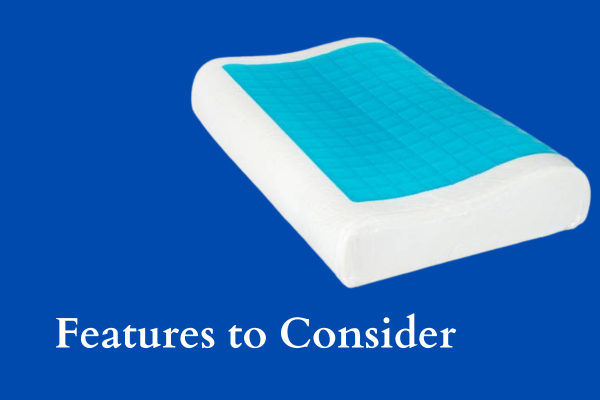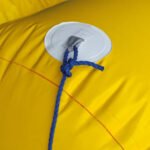An air mattress is an inflatable bed that can be easily transported and set up in any location. When combined with a pump, it becomes a convenient and practical solution for various situations, such as camping trips, sleepovers, or unexpected guests. With the ability to inflate and deflate, an air mattress with a pump offers versatility and comfort, making it a must-have for anyone who values a good night’s sleep while on the go.
Benefits of Air Mattresses with Pumps
1. Portability
One of the most significant advantages of air mattresses with pumps is their portability. Unlike traditional mattresses, air mattresses can be easily deflated, rolled up, and stored in a compact carrying case or bag, making them ideal for travelers, campers, and anyone with limited storage space.
2. Convenience
Setting up an air mattress with a pump is a breeze. Simply inflate the mattress using the included pump, and you’ll have a comfortable sleeping surface ready in minutes. This convenience makes air mattresses a popular choice for unexpected guests or last-minute sleepovers.
3. Adjustable Firmness
Many air mattresses with pumps come with adjustable firmness settings, allowing you to customize the level of support to suit your personal preferences. This feature ensures a comfortable sleeping experience for individuals with different body types and sleeping positions.
4. Space-saving
When not in use, air mattresses can be deflated and stored away, freeing up valuable living space. This makes them an excellent choice for small apartments, dorms, or homes with limited floor area.
Types of Air Mattresses with Pumps
1. Built-in Pump Air Mattresses
These air mattresses come with an integrated pump, eliminating the need for a separate pump. Built-in pump air mattresses are convenient and easy to use, as you only need to plug them in and turn them on to inflate the mattress.
2. External Pump Air Mattresses
In this type of air mattress, the pump is a separate unit that connects to the mattress via a valve. External pumps are often more powerful and can inflate the mattress faster than built-in pumps. They also offer more versatility, as you can use the same pump for multiple air mattresses or other inflatable items.
3. Manual Pump Air Mattresses
For those who prefer a more traditional approach or want to avoid using electricity, manual pump air mattresses are an option. These mattresses come with a hand pump or foot pump, which requires physical effort to inflate the mattress. While more labor-intensive, manual pumps are often more affordable and can be used in locations without access to electricity.

Features to Consider
When choosing an air mattress with a pump, consider the following features:
1. Size
Air mattresses come in various sizes, ranging from twin to king. Consider the number of people who will be using the mattress and the available space in your home or camping area to determine the appropriate size.
2. Height
The height of the air mattress can affect comfort and ease of getting in and out of bed. Taller air mattresses generally provide a more traditional bed-like experience, while shorter ones are more suitable for camping or floor sleeping.
3. Pump Type
As mentioned earlier, air mattresses can come with built-in pumps, external pumps, or manual pumps. Consider your needs and preferences when choosing the pump type. Built-in and external pumps offer convenience, while manual pumps provide a more budget-friendly option.
4. Pump Power
The power of the pump determines how quickly the air mattress inflates and deflates. Higher-powered pumps are more efficient and can save time, especially for larger air mattresses or when setting up multiple beds.
5. Valve Type
Air mattresses typically have one of two valve types: Boston valves or double-lock valves. Boston valves are easier to use and require less effort to inflate and deflate, while double-lock valves provide better air retention and are less likely to leak.
6. Weight Capacity
It’s essential to consider the weight capacity of the air mattress to ensure it can support the combined weight of the individuals sleeping on it. Most air mattresses have a weight limit ranging from 300 to 600 pounds, so choose one that suits your needs.
7. Durability
Air mattresses with pumps are subjected to regular inflation and deflation, as well as potential punctures or wear and tear. Look for mattresses made from durable materials, such as puncture-resistant PVC or reinforced seams, to ensure longevity.

Air Mattress with Pump Comparison
| Feature | Built-in Pump | External Pump | Manual Pump |
|---|---|---|---|
| Convenience | High | High | Low |
| Power | Moderate | High | Low |
| Portability | High | Moderate | High |
| Cost | Moderate | High | Low |
| Noise Level | Moderate | Moderate | Low |
How to Choose the Right Air Mattress with Pump
To choose the right air mattress with a pump, consider the following factors:
1. Purpose
Determine the primary purpose for which you need the air mattress. Is it for camping, hosting guests, or frequent travel? Different purposes may require different features, such as portability, durability, or ease of setup.
2. Budget
Air mattresses with pumps can vary significantly in price, ranging from budget-friendly options to high-end models. Determine your budget and prioritize the features that are most important to you.
3. Sleeping Preferences
Consider your sleeping preferences, such as firmness level, height, and support. Some air mattresses offer adjustable firmness settings, while others are designed for specific sleeping positions or body types.
4. Space Constraints
Measure the available space in your home, tent, or camping area to ensure you choose an air mattress that fits comfortably. Consider the mattress’s dimensions when inflated and deflated for storage.
5. User Reviews
Read user reviews and ratings to get an idea of the air mattress’s performance, durability, and any potential issues. Reputable online retailers and manufacturer websites can provide valuable insights from real-world users.
Frequently Asked Questions (FAQs)
1. How long does it typically take to inflate an air mattress with a pump?
The inflation time can vary depending on the size of the air mattress and the power of the pump. Generally, most air mattresses take between 2-5 minutes to fully inflate with a built-in or external pump.
2. Can an air mattress with a pump be used outdoors?
Yes, many air mattresses with pumps are designed for outdoor use, such as camping or backyard sleepovers. However, it’s essential to check the manufacturer’s recommendations and ensure the mattress is made from durable, weather-resistant materials.
3. How often should I replace my air mattress with a pump?
The lifespan of an air mattress with a pump can vary depending on the quality of the materials, frequency of use, and proper care. On average, most air mattresses last between 2 and 5 years with regular use. If you notice leaks, punctures, or significant wear and tear, it’s time to replace your air mattress.
4. Can I use a regular household vacuum cleaner to deflate an air mattress?
While it’s possible to use a household vacuum cleaner to deflate an air mattress, it’s generally not recommended. The powerful suction can potentially damage the air mattress or cause it to deflate too quickly, leading to creases or folds in the material. It’s best to use the included pump or a manual pump specifically designed for air mattress deflation.
5. Can I leave my air mattress with a pump inflated for an extended period?
Most air mattresses with pumps are designed for temporary use and should not be left inflated for more than a few days. Leaving them inflated for an extended period can cause the seams to strain and potentially lead to leaks or premature wear and tear.
6. How do I properly store my air mattress with a pump when not in use?
To properly store your air mattress with a pump, first, ensure it’s completely deflated and dry. Then, roll it up tightly and store it in the included carrying case or a suitable storage bag. Avoid storing the mattress in areas with extreme temperatures or direct sunlight, as this can degrade the materials over time.
7. Can I use an air mattress with a pump on a regular bed frame?
While it’s possible to use an air mattress with a pump on a regular bed frame, it’s generally not recommended. Air mattresses are designed to be used on flat, even surfaces, and a bed frame may cause uneven weight distribution or punctures. If you plan to use an air mattress for an extended period, it’s best to place it directly on the floor or invest in a suitable bed frame specifically designed for air mattresses.
8. How do I clean and maintain my air mattress with a pump?
To clean your air mattress, use a mild soap and warm water solution. Avoid using harsh chemicals or abrasive cleaners, as they can damage the materials. For maintenance, regularly inspect the mattress for leaks or punctures and follow the manufacturer’s instructions for proper inflation and deflation. Additionally, store the mattress in a cool, dry place when not in use.
Closing Thoughts
An air mattress with a pump is a versatile and convenient sleeping solution for various situations, from camping trips to hosting guests. With a wide range of options available, you can find an air mattress that fits your specific needs, budget, and preferences. By considering factors such as size, height, pump type, durability, and weight capacity, you can make an informed decision and enjoy a comfortable and restful night’s sleep, no matter where your adventures take you.


